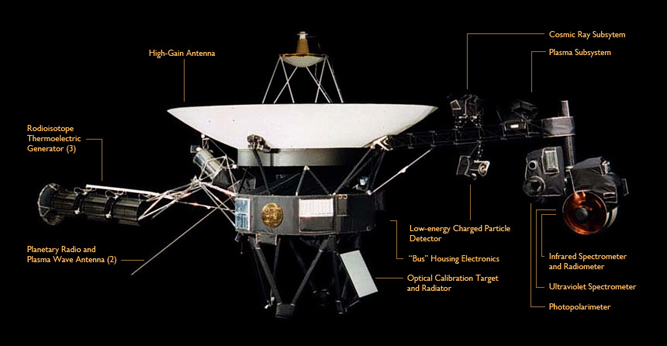The solid-state detectors we used on Voyager were similar to those that were starting to be used for gamma-ray astronomy. This was a new development in the early 1980s and I thought, “This is great! A new field, using these detectors that I really know well.” It turned out to be a great idea to explore the gamma-ray sky with these devices as others were also finding out because they were more sensitive and thus better for spectroscopy than the instruments that were used before.
The Voyager 1 spacecraft and instruments: Voyager 1 and 2 were launched 16 days apart in 1977 to study Jupiter and Saturn. In September 2013, NASA reported that Voyager 1 had entered interstellar space, placing it more than 11 billion miles from the Sun and making it the most distant human-made object. As of 2013, Voyager 2 is in the heliosheath, the outermost layer of the immense magnetic bubble, called the heliosphere, that contains our solar system. Both Voyager 1 and 2 are still sending scientific information about their surroundings through the Deep Space Network (DSN).
Credit: NASA/JPL
Since the early 1960s, there have been ideas that some stars and especially high-energy phenomena, like supernovae, would produce abundant quantities of gamma rays, but the early instruments detected nothing. That's because our atmosphere glows bright in gamma rays. When particles from the Sun and cosmic rays hit the Earth’s upper atmosphere, they create gamma radiation. Space has a lot of background noise in the form of high-energy particles that don’t allow you to see very clearly when gamma rays are coming directly from distant astronomical sources.


